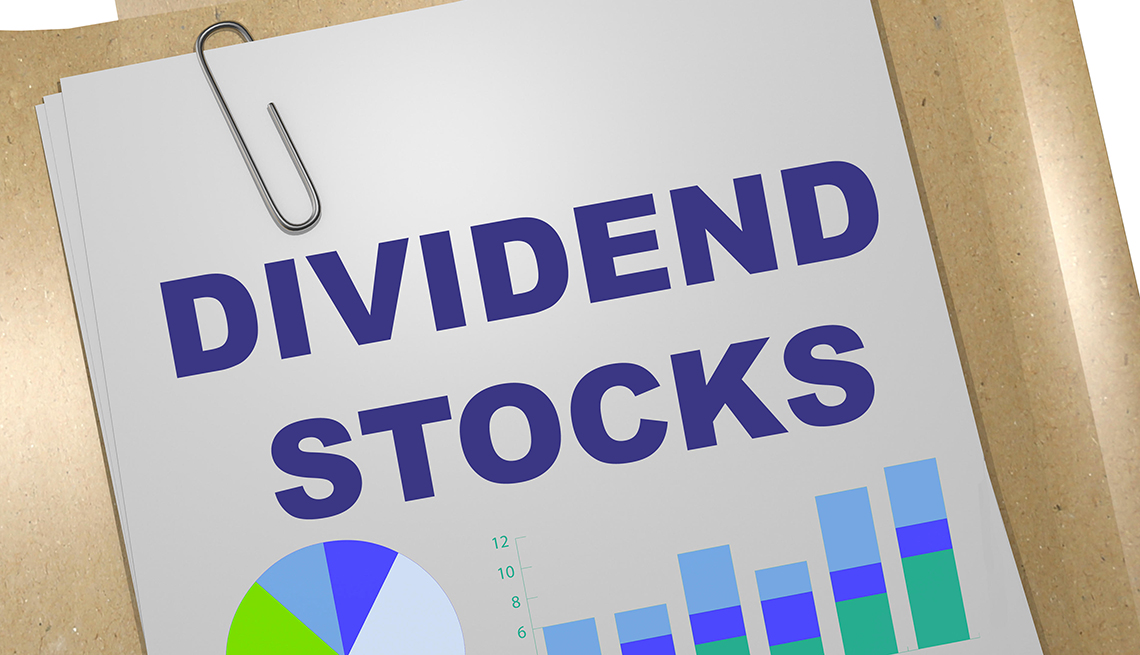Play all audios:
NO GUARANTEES From a retiree's point of view, dividends have three important advantages: * YIELD. Currently, the average dividend yield of the stocks in the S&P 500 index is 1.95
percent, compared with 0.12 percent for money market funds and 0.55 percent for bank savings accounts. * TAXES. Dividends are taxed by the IRS at a maximum 20 percent. If you're a
single filer and have taxable income of up to $40,000, your federal tax rate on dividends is zero. For those filing jointly, the zero bound is $80,000 in taxable income. To get to the 20
percent federal tax rate on dividends, single taxpayers must have $441,450 or more in taxable income, and those filing jointly must earn $496,600 or more. Everything in between is taxed at
15 percent. * HIKES. When you buy a bond, you get regular, fixed payments. Over time, those payments can get overwhelmed by inflation. A $1 interest payment will be worth just 68 cents after
20 years of 2 percent inflation. But a stock dividend has the potential to rise each year and keep up with inflation. ONE DRAWBACK: Companies hate to cut dividends, let alone eliminate them
entirely, because it's a sign of financial weakness. Wall Street feels the same way about financial weakness that Superman feels about kryptonite. When General Electric, once a
dividend stalwart, announced it was slashing its dividend to a penny a share in December 2018, the stock fell 4.6 percent the day of the announcement. It had already fallen 60 percent that
year, thanks to an earlier cut. More recently, Ross Stores, which had increased its dividend for 25 years, suspended it in May. The fashion retailer is down 16.7 percent this year. The
coronavirus pandemic is taking a toll on dividend payers. In January, ahead of the outbreak, no companies decreased or suspended their dividends. In May, 19 stocks in the S&P 500
decreased their dividends and 41 suspended them. The average dividend payout fell by 6 percent, as companies seek to conserve cash to weather the uncertainty. And, dividend or no dividend,
stocks are stocks, and when share prices fall, they can fall hard. The stock market has yet to recover fully from its sudden, deep decline from February through March. So far this year, the
Dividend Aristocrats have fallen 8.59 percent, compared with a 2.57 percent loss for the S&P 500 index. (Both figures include reinvested dividends.) THE KINGS OF DIVIDENDS Dividends
typically make up about a third of the total return — share-price appreciation plus dividends — from the S&P 500. These 10 companies have managed to raise their dividends every year for
at least 50 straight years, counting down from 64 years running: 64 YEARS DOVER 64 YEARS GENUINE PARTS COMPANY 63 YEARS EMERSON ELECTRIC CO. 63 YEARS PROCTER & GAMBLE 62 YEARS 3M
58 YEARS JOHNSON & JOHNSON 58 YEARS COCA-COLA 57 YEARS COLGATE-PALMOLIVE 52 YEARS STANLEY BLACK & DECKER, INC 51 YEARS HORMEL FOODS _Data: S&P Dow Jones Indexes_ DIVIDEND
INVESTING It's up to you to decide whether you want to invest in dividend-paying stocks, even those with long records of increasing their dividends. Research them carefully, and
don't hesitate to ask an adviser for guidance. Investing in a single stock can be far riskier than investing in a portfolio of stocks. When you have dozens of stocks, a big fall in one
stock can be buffered by your other holdings. When you have just one, it's entirely possible to lose most or all of the money you invest. You can, however, invest in mutual funds or
exchange-traded funds, which can own hundreds of securities. About 76 percent of the companies in the S&P 500 pay dividends, so you could invest in a fund that tracks the top S&P 500
dividend payers. ProShares S&P 500 Dividend Aristocrats and Vanguard Dividend Appreciation are two such funds to consider.

